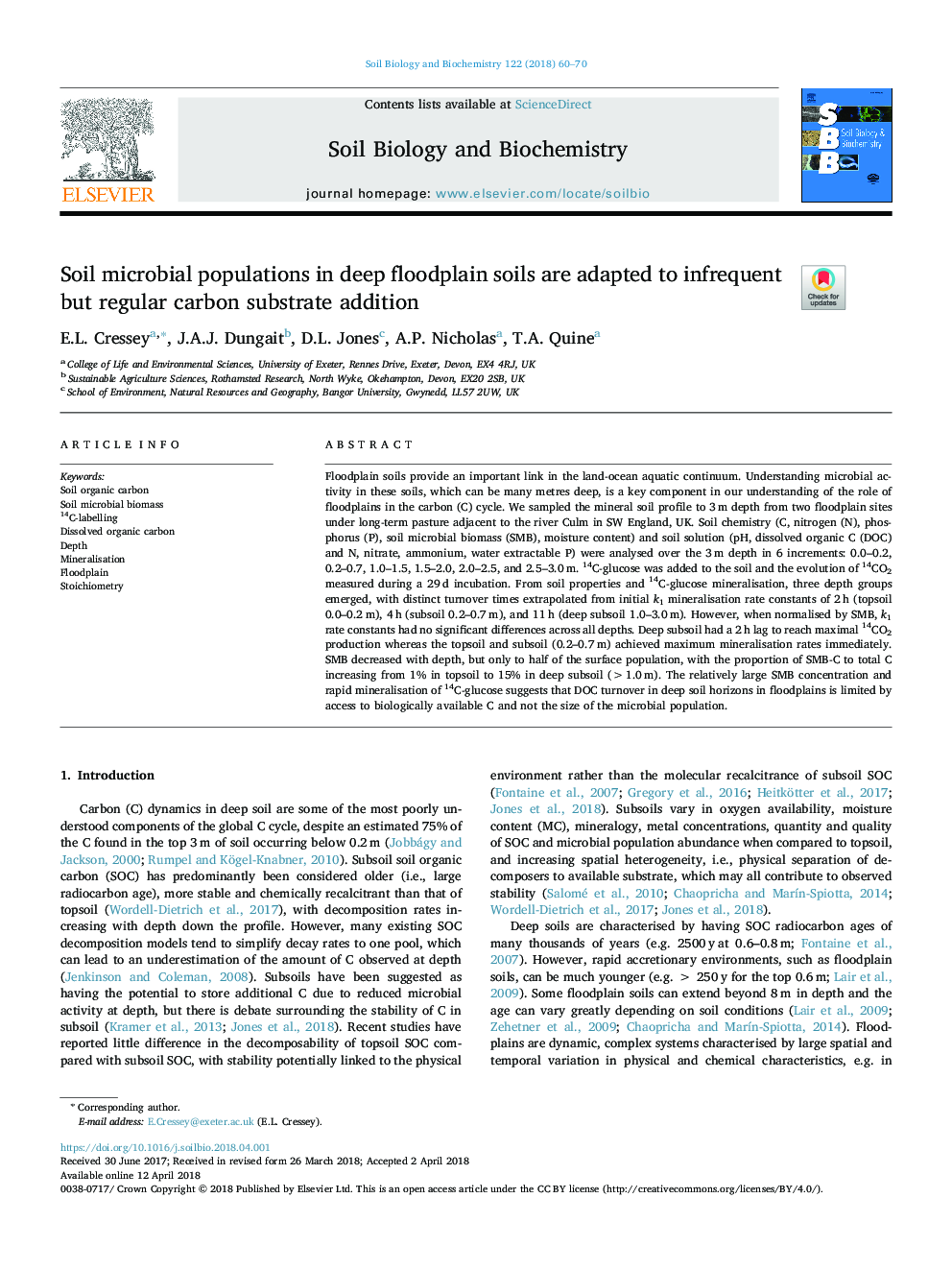| کد مقاله | کد نشریه | سال انتشار | مقاله انگلیسی | نسخه تمام متن |
|---|---|---|---|---|
| 8362674 | 1542562 | 2018 | 11 صفحه PDF | دانلود رایگان |
عنوان انگلیسی مقاله ISI
Soil microbial populations in deep floodplain soils are adapted to infrequent but regular carbon substrate addition
ترجمه فارسی عنوان
جمعیت های میکروبی خاک در خاک های عمیق سیلاب با افزودن سولفور سدیم مکرر اما منظم سازگار هستند
دانلود مقاله + سفارش ترجمه
دانلود مقاله ISI انگلیسی
رایگان برای ایرانیان
کلمات کلیدی
موضوعات مرتبط
علوم زیستی و بیوفناوری
علوم کشاورزی و بیولوژیک
دانش خاک شناسی
چکیده انگلیسی
Floodplain soils provide an important link in the land-ocean aquatic continuum. Understanding microbial activity in these soils, which can be many metres deep, is a key component in our understanding of the role of floodplains in the carbon (C) cycle. We sampled the mineral soil profile to 3â¯m depth from two floodplain sites under long-term pasture adjacent to the river Culm in SW England, UK. Soil chemistry (C, nitrogen (N), phosphorus (P), soil microbial biomass (SMB), moisture content) and soil solution (pH, dissolved organic C (DOC) and N, nitrate, ammonium, water extractable P) were analysed over the 3â¯m depth in 6 increments: 0.0-0.2, 0.2-0.7, 1.0-1.5, 1.5-2.0, 2.0-2.5, and 2.5-3.0â¯m. 14C-glucose was added to the soil and the evolution of 14CO2 measured during a 29â¯d incubation. From soil properties and 14C-glucose mineralisation, three depth groups emerged, with distinct turnover times extrapolated from initial k1 mineralisation rate constants of 2â¯h (topsoil 0.0-0.2â¯m), 4â¯h (subsoil 0.2-0.7â¯m), and 11â¯h (deep subsoil 1.0-3.0â¯m). However, when normalised by SMB, k1 rate constants had no significant differences across all depths. Deep subsoil had a 2â¯h lag to reach maximal 14CO2 production whereas the topsoil and subsoil (0.2-0.7â¯m) achieved maximum mineralisation rates immediately. SMB decreased with depth, but only to half of the surface population, with the proportion of SMB-C to total C increasing from 1% in topsoil to 15% in deep subsoil (>1.0â¯m). The relatively large SMB concentration and rapid mineralisation of 14C-glucose suggests that DOC turnover in deep soil horizons in floodplains is limited by access to biologically available C and not the size of the microbial population.
ناشر
Database: Elsevier - ScienceDirect (ساینس دایرکت)
Journal: Soil Biology and Biochemistry - Volume 122, July 2018, Pages 60-70
Journal: Soil Biology and Biochemistry - Volume 122, July 2018, Pages 60-70
نویسندگان
E.L. Cressey, J.A.J. Dungait, D.L. Jones, A.P. Nicholas, T.A. Quine,
